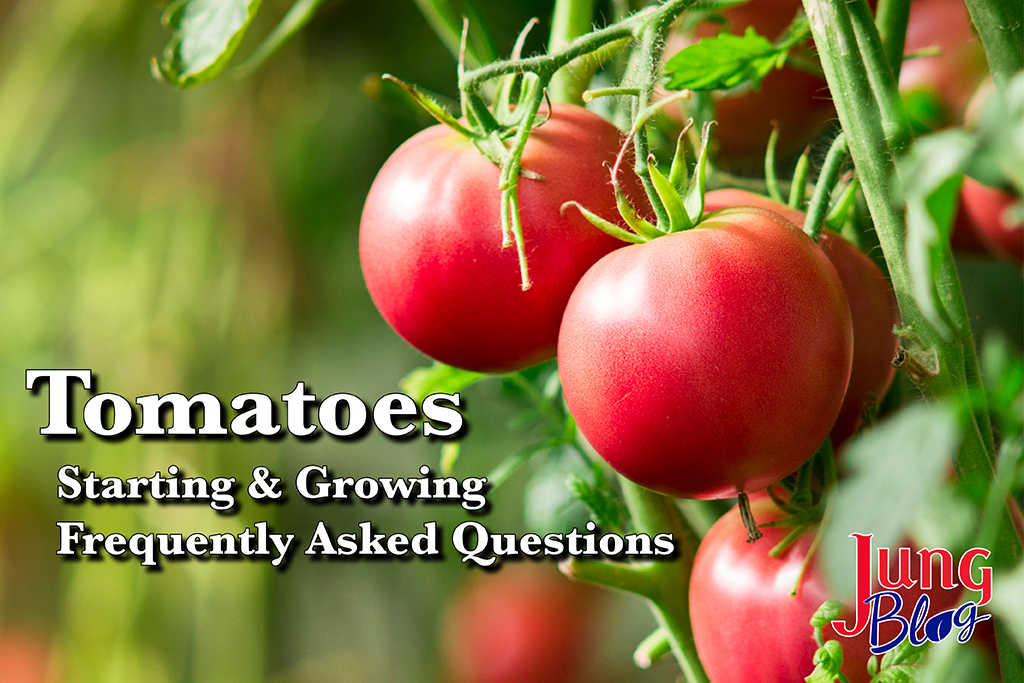
Tomatoes are a popular choice for a vegetable garden. They come in a variety of types, sizes, and colors. They are great for cooking, canning, and eating raw. Growing tomatoes doesn’t have to be difficult. We’ve taken some of the most frequently asked questions to help give you a great start to this year’s growing season.
When Should You Start The Tomato Seed Indoors?
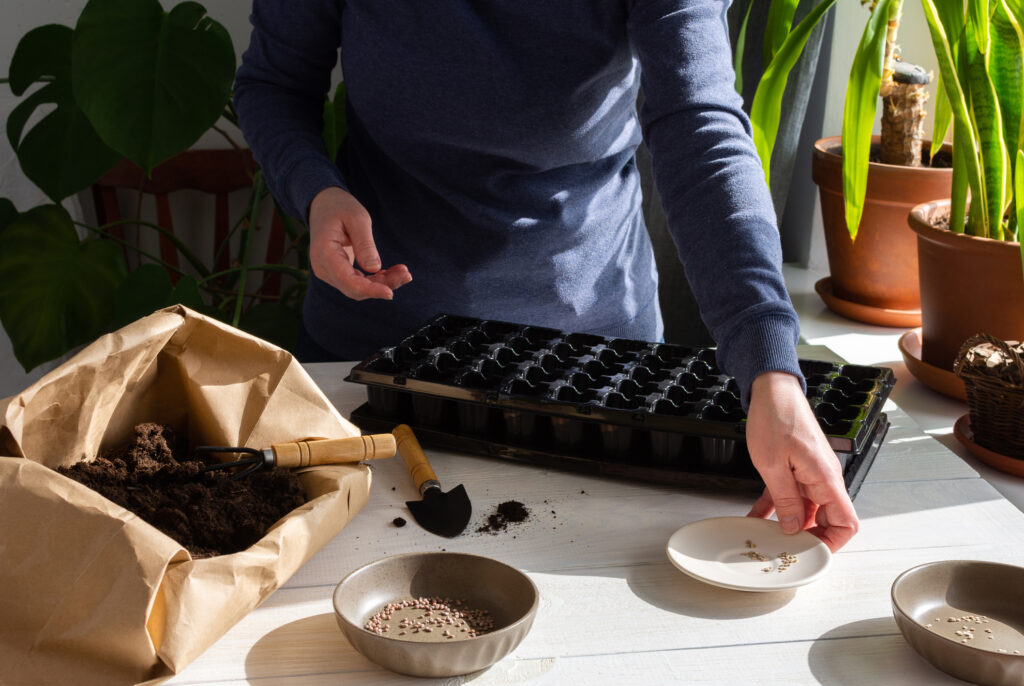
Tomato seeds should be started approximately 6 weeks prior to your last average frost date.
How Long Does It Take For A Tomato Seed To Germinate?
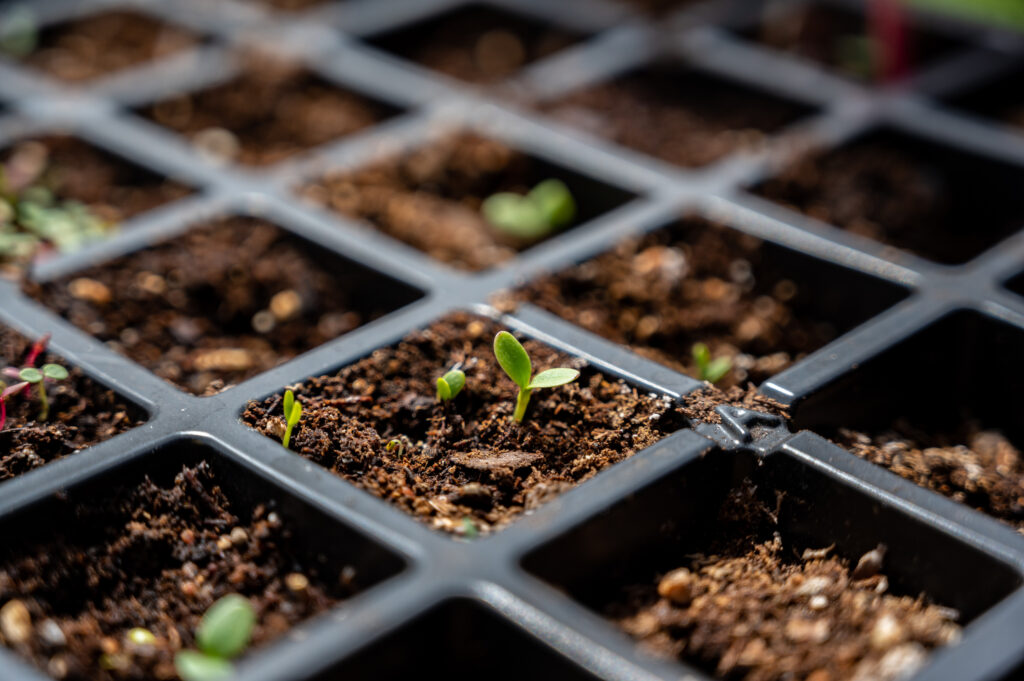
Most tomato seeds will germinate in about a week.
What Is The Best Size For The Tomato Plant To Be When I Transplant It Into The Ground?
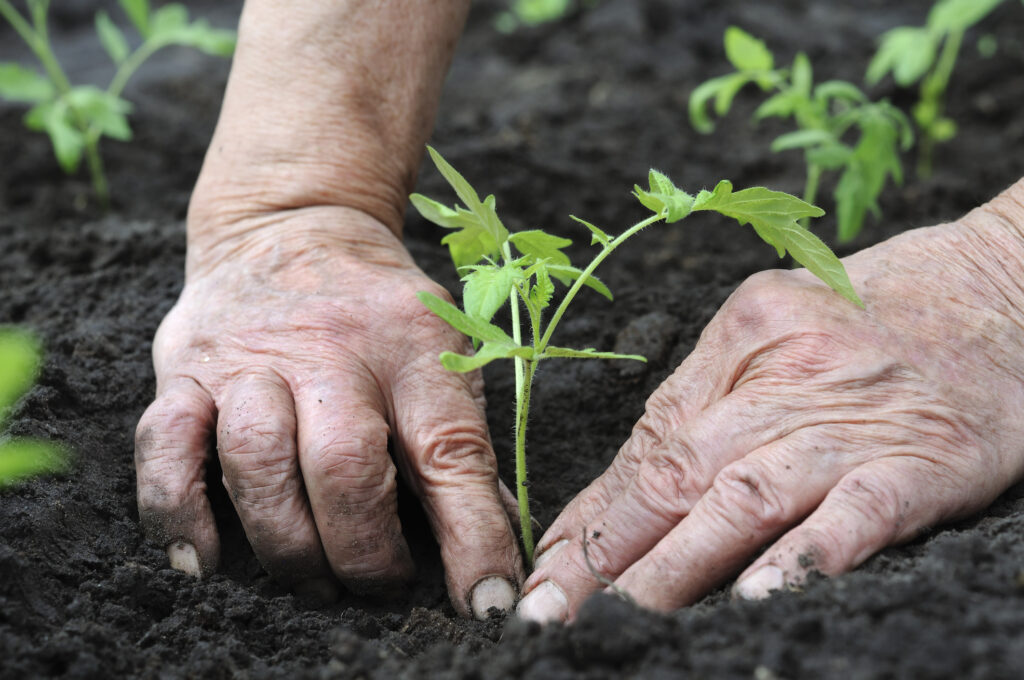
Tomatoes and other veggies started indoors should have been stepped up 2 to 3 times before hardening off and then transplanted into the garden. Each step-up will be into pots sized about 1 inch a larger diameter each time. From the seed tray initially, seedlings should have 1 to 2 sets of healthy true leaves. These go first into 2-2.25″ pots, then 3-3.5″ and finally after about the 5th week into 4-6 inch pots. From this size, they will get hardened off outside.
How Do I Transition My Tomato Plants To Full Sun?

Keep them up, off the ground, in a partly shaded area. Then move them into ever-increasing sunlight each day or two. Eventually, they should have spent 2 to 3 days in full sun in their pots before going out into the garden.
What Do You Recommend For Mulch…Straw? Woodchips?
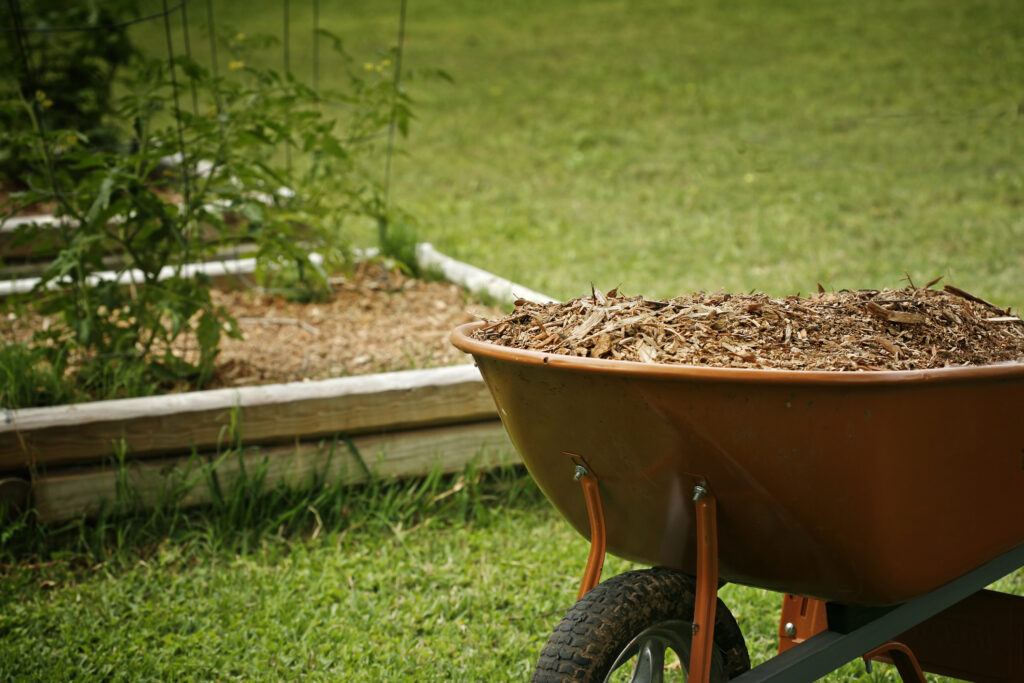
Many different products work well for mulching. Clean straw, marsh hay, pine needles, or shredded cedar all work well to help suppress weeds and retain soil moisture. Because of different consistencies, you would want to try different depths of each type to get the best results. For example, you need more pine needles than shredded cedar because of the different densities of both.
What Type Of Fertilizer Should I Use And How Often?

Start fertilizing seedlings when their true leaves form. Use 1/2 recommended label dilution rate for seedlings, once per week. Once plants are in the garden, switch to recommended full dilution rate and follow instructions for feeding listed on the product label. Use a liquid, naturally derived, water-soluble Tomato-specific fertilizer like ALGOPlus Tomato Food 4-6-8 or Neptune’s Harvest Tomato/Veg. formula 2-4-2.
What Do You Recommend To Control Blight?
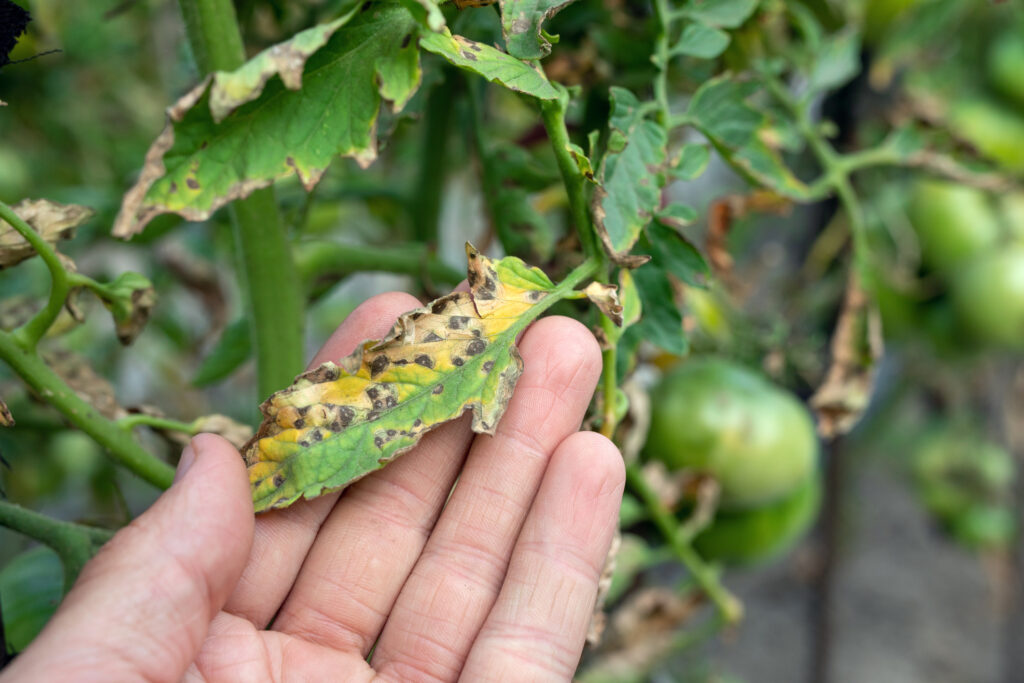
Tomato plants can be susceptible to many different blights. Blights are diseases that cause adverse physical damage to plants by way of spotting, scorching, browning or necrotic tissues, wilting, and such. All blight diseases behave differently and have very specific pathogens that cause them. Prevention starts by choosing tomato varieties that have been bred with higher-than-normal resistances to whatever pathogen is causing issues. If you are not sure what the specific disease or blight is, then the best option is to choose varieties that are resistant to the greatest number of pathogens.
Disease-Resistant Tomato Varieties
- Mountain Merit Hybrid Tomato
- Better Boy Hybrid Tomato
- Celebrity Hybrid Tomato
- Plum Regal Hybrid Tomato
- Defiant Phr Hybrid Tomato

Equally important prevention measures for disease/blight are to utilize proper cultural strategies.
Cultural Control Practices
- Use optimum plant spacing, pruning, and caging to keep plants separated, open, supported, and lifted from the bottom, all with excellent air circulation.
- Mulch well under and around all plants.
- Water at the base of your plants, working to never get the foliage wet.
- Water consistently using the 1 inch per week rule, and more if during hot dry spells.
- Fertilize regularly with low nitrogen, tomato-specific foods with extra calcium, but don’t over-fertilize!
- If you are going to utilize preventative fungicides, apply them at the right time, in the right amount, and in rotation, starting with mineral-based (sulfur or copper) or bio-fungicide (Revitalize®) for the first 1/2 of the season, then switch to a broad-spectrum synthetic type (Fung-onil®) for the 2nd half of the growing season as needed.
Other Recommended Reading

- How To Prevent Yellow Shoulder Disorder On Tomatoes
- Tomato Growing Guide
- Growing Vegetables Indoors From Seed
- Demystifying Fungicides
- Easy To Grow Salsa Garden
At Jung Seed Co, we strive to be your go-to guide for all your gardening needs. Our YouTube channel Jung Garden Center now includes our new video series All Things Green where our experts provide gardening tips for all levels of gardeners. When you need reliable gardening advice, turn to the trusted experts at Jung.
View our new catalog online or browse our website for all of your gardening favorites. To receive info on new products, exclusive deals, and specials, be sure to sign up for our weekly email. Join our Facebook page, to discuss all things gardening!
